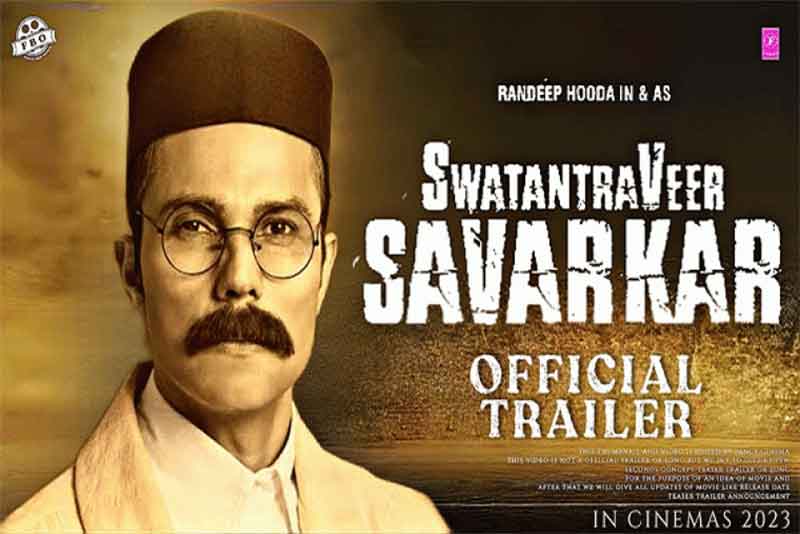
Sairat(2016) was a huge commercial success that is still being much talked about. But, whichever way you look at it, Sairat is a far cry from Nagraj Manjule’s debut film, Fandry, which deservedly enjoyed much critical support. Sairat is tailor-made to seduce the younger generation of viewers, meaning roughly those in the age-bracket of 15 to 30. The film’s mounting is on a grand scale; its storytelling begins, continues, and ends on a high pitch. The pace at which it moves, especially as long as the narrative is played out in and around an anonymous Maharashtra village, is designed to dazzle. It has all the elements that would endear a film to the vulnerable – romance, song-and-dance, cockeyed humour, violence, and death steeped in blood and predictability.
Sitting in a Pune theatre, this writer remembers having witnessed the flood of youthful approval bestowed on the film; suspense and sentimentality conquered heaven and earth. Its technical qualities are not to be doubted, but the narrative techniques employed by Manjule must be questioned, perhaps rubbished. Sairat has nothing whatsoever to do with the manifesto of the renewed ‘New Cinema’ movement in Marathi, yet there are those who think that it engages in a discourse on the Dalit issue in the Maharashtra countryside – one of the principal subjects of the movement. Sairat could as well pass for a well-calculated commercial film, the like of which you come across every now and then in the Hindi film industry. What we call the ‘Dalit aesthetic’ is conspicuous by its absence in Sairat. The film couldn’t bother less with a discourse on the Dalit experience.
Manjule is on record : “Sairat is a very simple and straight story. I can say that it is a reflection of Bollywood that has been inside me. It comes from there, it is a hardcore love story unlike Fandry. This is my kind of love story. I don’t like to repeat things. For Sairat I am open to newer ways of executing the film and leave the rest to the audience.”
Sairat is not simple, as Manjule claims it to be, but simplistic to the point of being shallow and terribly disappointing, coming as it did on the heels of a strong and culture-specific work like Fandry. True simplicity is perhaps the most difficult virtue to achieve in a film, or any other form of art for that matter. It requires a director to have such powers of reflection and application that Manjule is unable to show in any degree whatsoever in Sairat. Instead, what we clearly see is a talented but devious mind working to a scheme designed to narcotize a mindless gallery and thereby achieve a popularity the cheapness of which is a matter of great regret, not riotous celebration. In that sense, Sairat is dishonest and, what is more, dangerous in that it holds out the temptation to other young Marathi filmmakers, at least some of whom may be promising and principled to begin with, about how to allow themselves to be lured by the spectre of box-office success at any cost.
Then again, when Manjule claims that he “is open to newer ways of executing the film”, he seems to be suggesting that he has broken fresh ground with Sairat. Actually, he has done nothing of the sort, and he should be the first to realize the hollowness of his claim. He admits as much when he says that “Sairat is a reflection of Bollywood that has been inside me”. What is Bollywood largely but an unfortunate sub-culture, a long history of deception, an extended exercise in making the most of playing with the sentiments of a pan-Indian audience hungering for escape from the drudgery of everyday realities. If anything, Sairat is a Marathi clone of countless questionable Hindi models. It doesn’t behove a man of Manjule’s intelligence to think that he can have his way with such weak explanations as are to be discerned in his directorial statement.
In a democracy, freedom of expression is counted among a citizen’s fundamental rights. But it should be widely recognized that the spoken or the written word comes to be truly and firmly established when it is exercised with responsibility and the restraint associated with mindful and focussed application. In the context of Sairat, the way in which some people have been freely using terms like ‘classic’ or ‘masterpiece’ fills one with almost a sense of dread. Here, the words of one Jaybrato Das, writing in The Telegraph on July 23, 2018, may be mentioned : “Dhadak (a Hindi clone) is the latest addition to a list of films that have been adapted from a regional masterpiece, Sairat. The 2016 Marathi blockbuster was made for Rs. 4 crore, but fetched Rs.110 crore, making it one of those rare gems that need to be told despite language barriers.” Das’ logic, or rather the absence of it, is indeed bewildering! The way he puts it, it would appear that Sairat is a ‘masterpiece’ and a ‘rare gem’ on account of the stupendous box-office returns it notched up. Perhaps, nothing speaks more vividly of the soulless times we are living in than the common enough inclination to measure the worth of a film solely in terms of its popular acceptance. By that standard, Ghatak’s classics are not worth even the cans in which they are preserved at Pune and other archives across the world!
Truth to tell, Sairat is that contemporary product of dubious value which produces, to quote Hermann Hesse, “noise instead of music, pleasure instead of joy, gold instead of soul, business instead of creative work, foolery instead of passion”. The film is a spectacular trivia that has taken this “trivial world of ours” (Hesse) by storm. Now that Manjule has tasted the blood of big-time success, it is unlikely that the hound in him will allow him to return to the believable anger, or the hunger for honesty that Fandry memorably epitomized. Perhaps, herein lies a danger more pressing than Manjule’s own decline as an artist. For all one knows, he may have written a Faustian prescription for other young Marathi filmmakers to follow, and be damned.
( Vidyarthy Chatterjee writes on cinema,society, and politics.)
SIGN UP FOR COUNTERCURRENTS DAILY NEWSLETTER















































